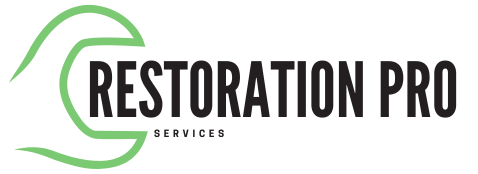
If you’ve ever dealt with water damage, you know how quickly things can spiral out of control. One day your carpet feels damp, and the next, you’re noticing that musty odor no homeowner wants—mold. Living in Glendale, Colorado, with its mix of snowy winters and occasional summer storms, water damage is more common than you might think. And when it happens, fast action is the difference between a quick cleanup and a full-blown health hazard.
In this blog, we’ll dive into why water damage restoration in Glendale, Colorado is so important, how to spot the early warning signs, and what steps to take before mold takes over your home.
Why Water Damage Restoration in Glendale, Colorado Matters
Let’s be real—water damage never happens at a “good time.” Whether it’s a burst pipe, a leaking roof, or even a minor appliance overflow, excess water can sneak into hidden corners of your home. Once it’s there, mold spores begin to multiply within 24–48 hours.
Now, mold isn’t just an ugly stain on your drywall. It can trigger allergies, worsen asthma, and even cause long-term health problems for kids and older adults. That’s why professional water damage restoration in Glendale, Colorado isn’t just about saving your flooring or drywall—it’s about protecting your family’s health.
And here’s the kicker: DIY cleanup often misses moisture trapped behind walls, under flooring, or inside HVAC systems. Certified restoration teams use industrial-grade equipment to dry your home completely. Skipping that step? That’s like leaving the front door open and hoping bugs won’t wander in.
How to Spot Water Damage Before Mold Spreads
Catching water damage early is half the battle. Glendale homeowners should watch for these red flags:
Musty odors – That damp, earthy smell often signals mold growth.
Peeling paint or wallpaper – Water weakens adhesives, making surfaces bubble or flake.
Discoloration – Yellow or brown stains on ceilings or walls are classic watermarks.
Warped floors – Hardwood, laminate, and even tiles can buckle when moisture seeps in.
Sudden spike in utility bills – A hidden plumbing leak can cause water usage to skyrocket.
If you notice any of these signs, don’t wait. The longer water sits, the deeper it seeps—and the bigger the restoration bill.
The Water Damage Restoration Process in Glendale
So, what actually happens when you call in the pros for water damage restoration in Glendale, Colorado? Here’s the step-by-step:
1. Emergency Response
Most restoration companies offer 24/7 service, because water damage doesn’t exactly wait for business hours. A team arrives fast to assess the situation and stop the source of water.
2. Water Extraction
Using powerful pumps and vacuums, they remove standing water. This step alone saves you from further structural damage.
3. Drying and Dehumidification
This is where DIY cleanup usually falls short. Industrial air movers and dehumidifiers ensure every hidden pocket of moisture is dried—walls, floors, crawlspaces, and even the air itself.
4. Cleaning and Sanitizing
Water can carry bacteria and contaminants. Professionals disinfect affected surfaces, ensuring your home is safe to live in again.
5. Restoration and Repairs
Finally, damaged materials like drywall or insulation are replaced, flooring is restored, and your home is brought back to its pre-loss condition.
The beauty of this process? It doesn’t just fix what’s visible—it prevents mold from spreading where you can’t see.
The Cost of Waiting: Mold’s Impact on Your Health and Wallet
You might be tempted to put off water damage cleanup, especially if the damage seems “minor.” But here’s the reality: mold grows fast and spreads silently. By the time you see it, it’s usually much worse behind the walls.
Health impact: Mold exposure can cause headaches, coughing, eye irritation, and fatigue. For children, elderly, or immunocompromised individuals, the risks are even higher.
Property value: Selling a home with water damage or mold issues? Expect low offers—or none at all.
Repair costs: A $500 cleanup today can turn into a $10,000 renovation tomorrow if mold remediation is needed.
Simply put: acting fast saves both your health and your wallet.
Related Read: The Truth About Pro Restoration Services in Denver
If you’re curious about what real homeowners in Colorado have faced, check out our blog: The Truth About Pro Restoration Services in Denver: Real Stories From Local Homeowners. You’ll see firsthand why calling professionals immediately makes all the difference.
How Glendale Homeowners Can Prevent Water Damage
While some situations are unavoidable, a few preventive steps can reduce your risk of water damage:
Regular plumbing checks – Inspect pipes under sinks, around water heaters, and in basements.
Roof inspections – Colorado snow and ice can weaken shingles. Catch issues early.
Gutter maintenance – Clean gutters prevent overflow that can seep into your foundation.
Basement waterproofing – A smart investment if your home is prone to leaks.
Know your shut-off valve – In case of a burst pipe, turning off water quickly limits the damage.
Being proactive not only protects your property but also gives you peace of mind when storms hit.
Final Thoughts: Don’t Wait—Act Fast
Water damage isn’t just inconvenient—it’s a ticking clock. The sooner you act, the safer your home and family will be. If you’re facing a leak, flood, or unexplained dampness, don’t gamble with DIY fixes. Call a water damage restoration expert in Glendale, Colorado and get the job done right.
👉 Call us today for a 24/7 emergency response and protect your home before mold takes hold.
